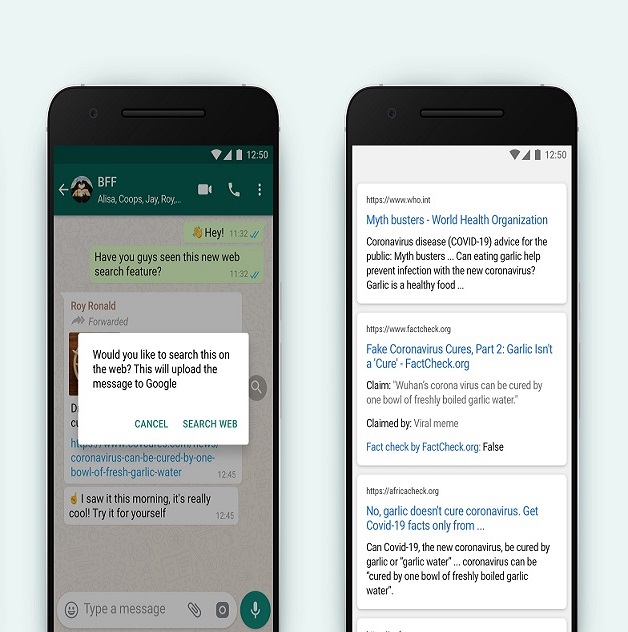The social media platform WhatsApp has been trying to fight the spread of fake news on its platform. Whatsapp limits the forward message feature to five users. This means a user can forward a text to up to five users. However, the ongoing COVID-19 pandemic witnessed new ways of fake news spread. To fight the misinformation infodemic, Whatsapp has introduced the ‘search web’ feature to spot messages and forwards that are fake.
How does the ‘search web’ feature work?
This new feature helps the user to search messages that have been forwarded to other users. Knowing the forwards can help people find news results or sources related to the information about the content received on the app.
Users just need to double click the received ‘forwarded’ messages by tapping the magnifying glass button available in the chat.
“We’re piloting a simple way to double-check these messages by tapping a magnifying glass button in the chat. Providing a simple way to search messages that have been forwarded many times may help people find news results or other sources of information about the content they have received,” said WhatsApp in a Blog Post.
The new features will be available in global markets such as Brazil, Italy, Ireland, Mexico, Spain, the UK, and the US for those on the latest versions of WhatsApp for Android. The company hasn’t announced any details on when the feature will be available in India.
The platform has been urging its users to verify any messages before forwarding them to groups or individual chat boxes on their phones. In order to fight the ongoing coronavirus pandemic, WhatApp has partnered with many state governments to provide users with relevant and accurate information regarding COVID-19.
WhatsApp has received huge backlash for failing to do enough to curb fake news spreads on its platform. India is emerging as the biggest market for Whatsapp, facing the hard-hit due to the false information spread through messages on the app.
The way WhatsApp is built makes it difficult to combat fake news. A piece of information that goes viral often gets shared on the app, but the end-to-end encrypted feature makes it difficult to kill misinformation at the source.
The selling point for the app is its ‘end-to-end’ encryption that offers complete protection of the privacy of a user. However, this same feature creates hurdles for the platform to bring a fool-proof mechanism.
Combating fake news
When a user updates her/his phone and receives the new ‘search web’ feature on her/his phone. S/he will then be able to see a magnifying glass button located just next to a forwarded message s/he received.
When the user clicks on the magnifying glass s/he will be directed to a Google search and a set of results will appear showing if the message is fake or not. The update brings a special label on forwarded messages which are shared in chats.
The two arrows will help people know if they have received a message that was not written by close contact or the forwarded messages.

